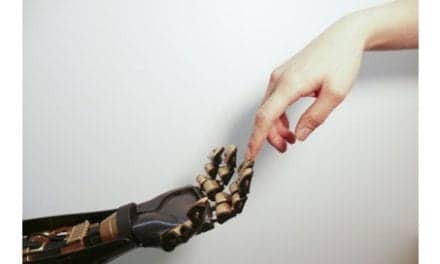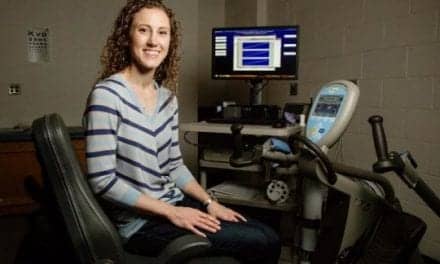Researchers from Northwestern University have designed a regenerative bandage that they suggest healed diabetic wounds 33% faster than other bandages currently on the market.
“The novelty is that we identified a segment of a protein in skin that is important to wound healing, made the segment and incorporated it into an antioxidant molecule that self-aggregates at body temperature to create a scaffold that facilitates the body’s ability to regenerate tissue at the wound site,” says study leader Guillermo Ameer, in a media release.
“With this newer approach, we’re not releasing drugs or outside factors to accelerate healing. And it works very well.”
The study was published recently in the Proceedings of the National Academy of Sciences.
The secret behind the bandage is laminin, a protein found in most of the body’s tissues, including the skin. Laminin sends signals to cells, encouraging them to differentiate, migrate, and adhere to one another.
In the study, Ameer’s team identified a segment of laminin—12 amino acids in length—called A5G81 that is critical for the wound-healing process.
“This particular sequence caught our eye because it activates cellular receptors to get cells to adhere, migrate and proliferate,” adds Ameer, the Daniel Hale Williams Professor of Biomedical Engineering in the McCormick School of Engineering, professor of surgery in the Feinberg School of Medicine and director of Northwestern’s new Center for Advanced Regenerative Engineering (CARE), per the release.
“Then we cut up the sequence to find the minimum size that we needed for it to work.”
By using such a small fragment of laminin rather than the entire protein, it can be easily synthesized in the laboratory—making it more reproducible while keeping manufacturing costs low. Ameer’s team incorporated A5G81 into an antioxidant hydrogel bandage that it previously developed in the laboratory.
The bandage’s antioxidant nature counters inflammation. And the hydrogel is thermally responsive: It is a liquid when applied to the wound bed, then rapidly solidifies into a gel when exposed to body temperature. This phase change allows it to conform to the exact shape of the wound, the release explains.
Patients also must change bandages often, which can rip off the healing tissue and re-injure the site. Ameer’s bandage, however, can be rinsed off with cool saline, so the regenerating tissue remains undisturbed.
Not only will the lack of drugs or biologics make the bandage move to market faster, it also increases the bandage’s safety. So far, Ameer’s team has not noticed any adverse side effects in animal models.
Next, Ameer’s team will continue to investigate the bandage in a larger pre-clinical model, the release notes.
[Source(s): Northwestern University, Science Daily]




